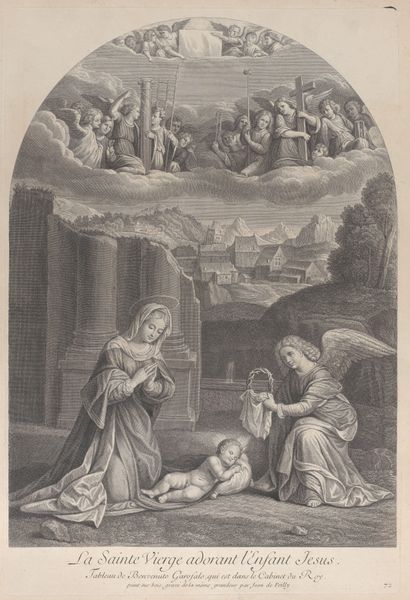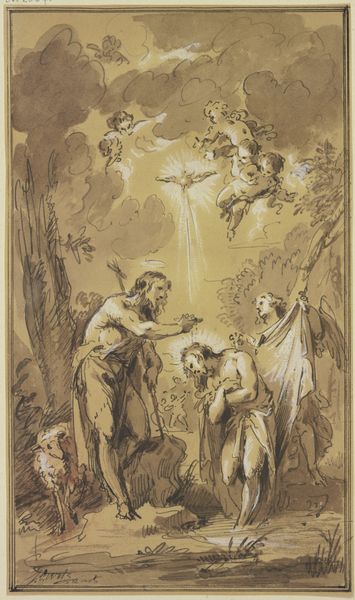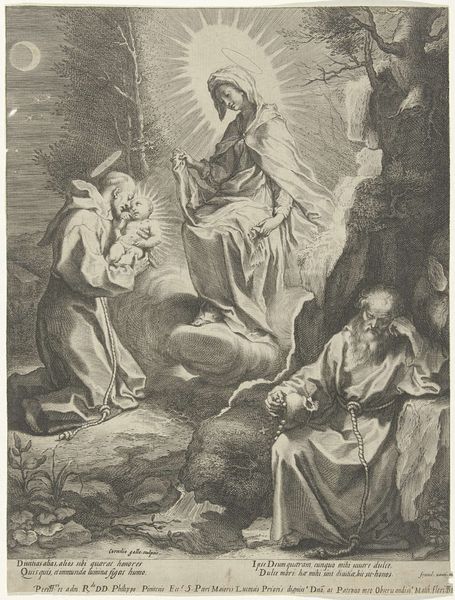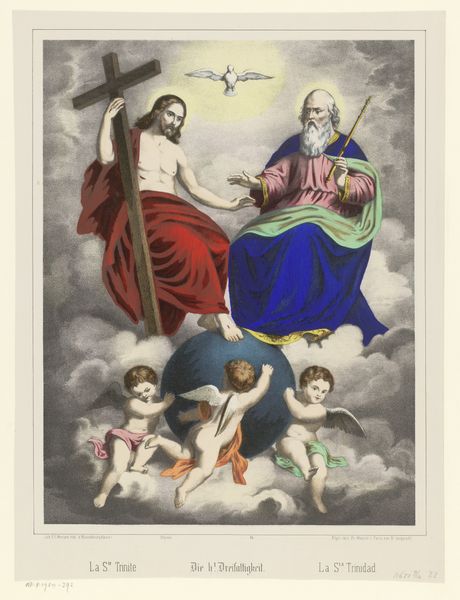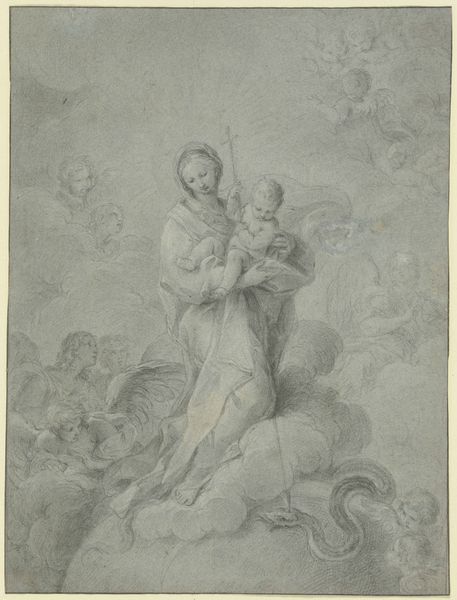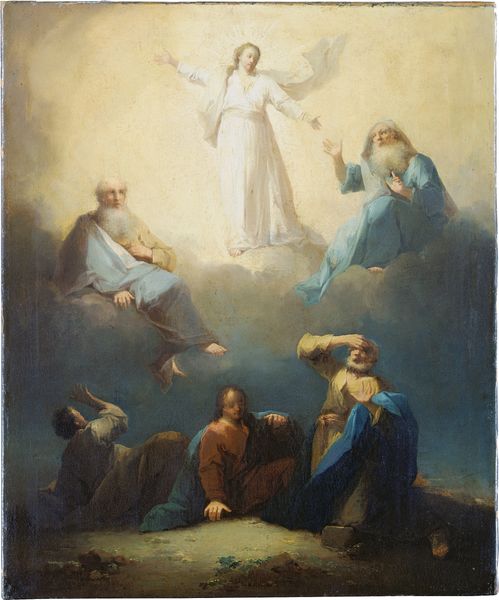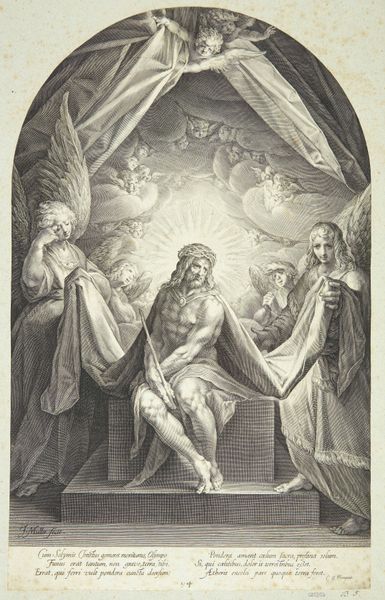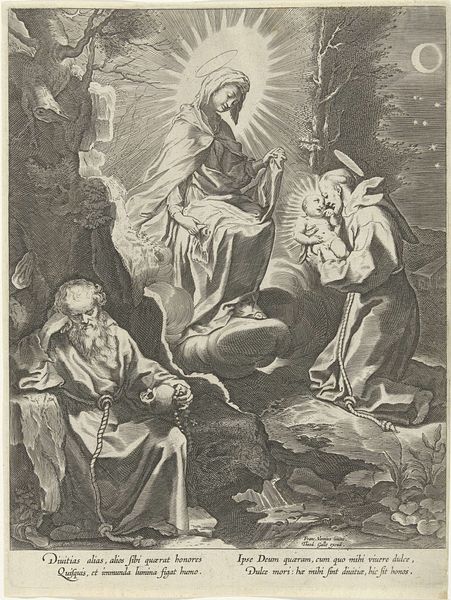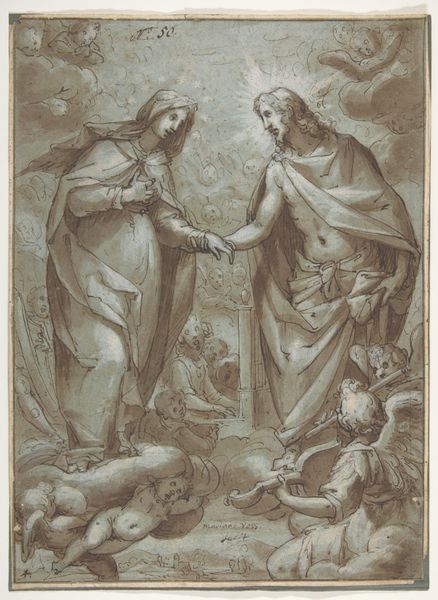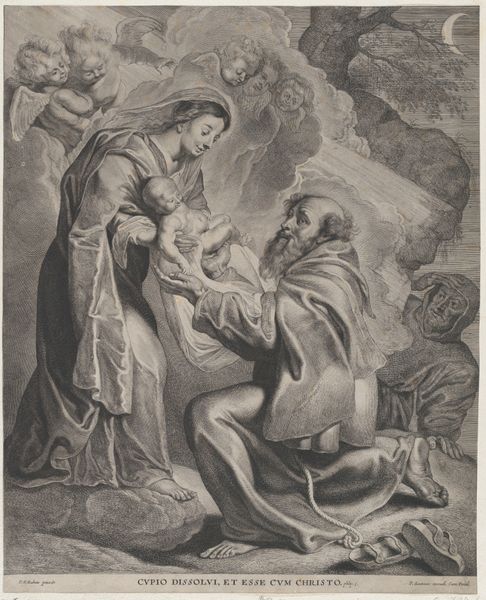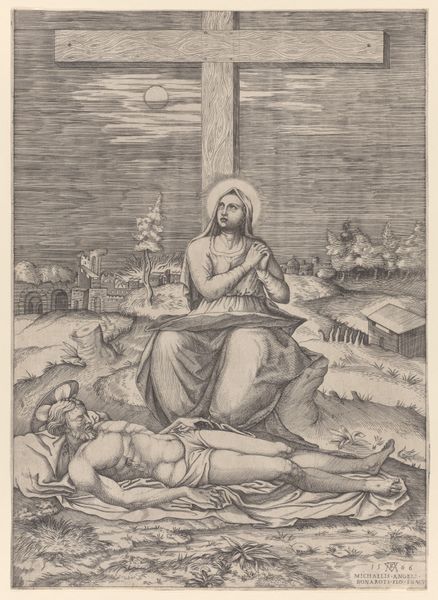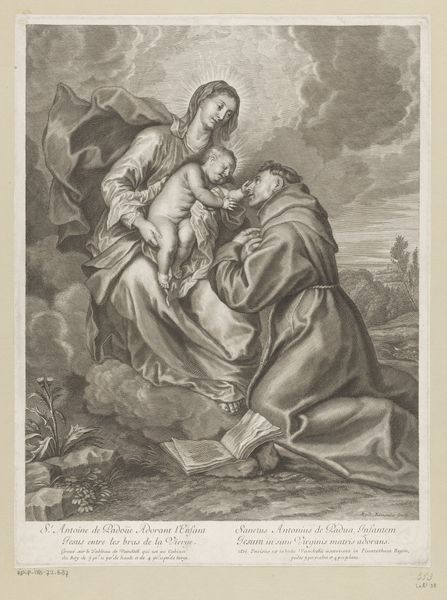
drawing, watercolor
#
drawing
#
narrative-art
#
the-ancients
#
landscape
#
figuration
#
watercolor
#
watercolor
Copyright: Public Domain
Curator: Here in Gallery 3, we have "Agony in the Garden," a watercolor drawing by Karl Gottlob Schönherr, now held in the Städel Museum collection. Editor: It has such a striking, ethereal quality. The palette is muted, and it creates a profound sense of loneliness and inner turmoil. Curator: Indeed. The image depicts Christ kneeling in prayer in Gethsemane, as an angel descends bearing a chalice. This subject resonated with artistic circles preoccupied with emotional expressiveness in the 19th century. It was widely reproduced as popular devotional art, though not widely considered part of mainstream art history. Editor: That chalice is crucial. In Christian iconography, it symbolizes the sacrifice Christ will make for humanity. You see it in so many forms and contexts, yet the meaning always boils down to sacrifice. What makes it poignant here is that you can see it is about to be offered, but it isn't a promise of glory so much as an offer to a very burdened soul. Curator: Precisely. Schönherr places Christ in a landscape imbued with emotional weight. Consider that stormy background contrasting sharply with the ethereal glow around the angel. The institution of religious art serves many social functions, ranging from reinforcement of dogmatic beliefs to fostering social solidarity amongst communities and acting as propaganda. Editor: And in the foreground, notice the huddled disciples, barely visible in the shadows? They symbolize human failing, the inability to truly comprehend or share in Christ’s suffering. The whole scene speaks volumes, almost visually pleading. The halo in this picture indicates the suffering already marking Christ’s sacred role. Curator: That's well observed. Schönherr successfully navigates the space between conveying religious narratives, serving institutional demands, and resonating with wider social concerns. The watercolor drawing could be assessed by looking at changing social practices of religiosity over the course of the 19th century, particularly the relationship to Romanticism. Editor: The universality of struggle transcends religious beliefs. And what Schönherr has so wonderfully communicated, for me, is that deeply intimate moment of dread and the searching for solace in faith. Curator: A sentiment certainly worth contemplating as we move onward through our exhibition. Editor: Absolutely. A deeply moving image, to say the least.
Comments
No comments
Be the first to comment and join the conversation on the ultimate creative platform.

